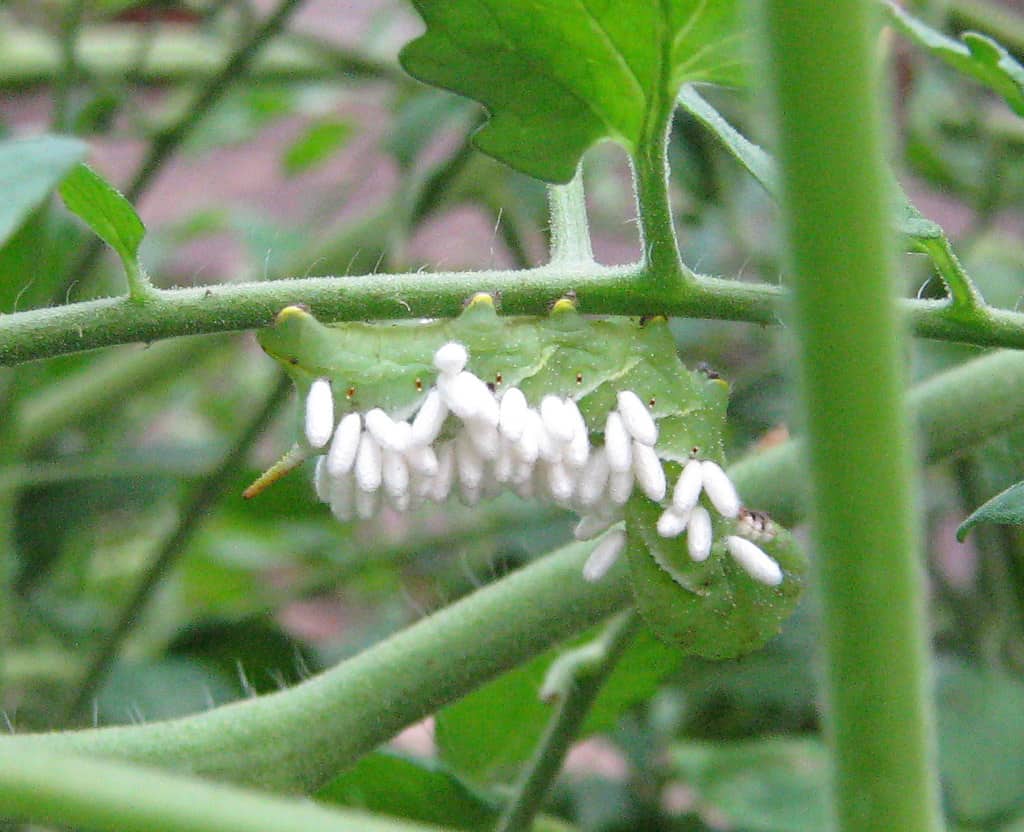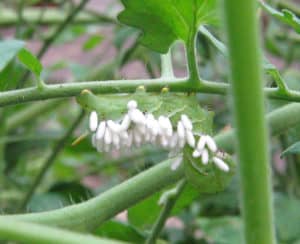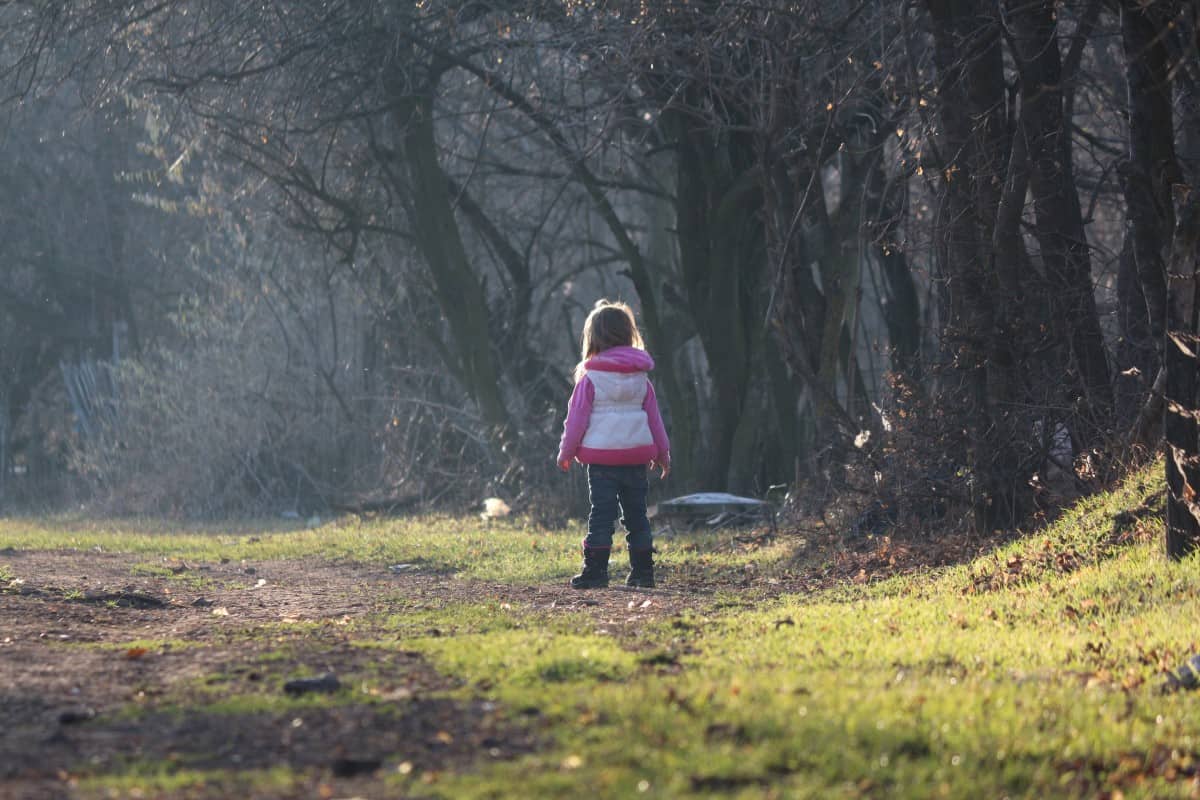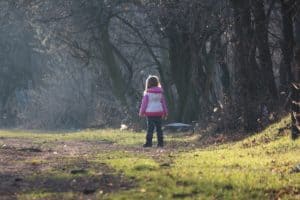
20
AugAsking the Right Questions
 Every now and again, I’ll start reading a book with the belief that it is about one topic when it is about something else entirely, or about many things. I’m one of those people who sometimes wanders among the stacks of the library until a cover or title catches my eye – so you might argue that I’m getting what I deserve when I eschew a more disciplined approach. Still, this habit has led to some interesting discoveries.
Every now and again, I’ll start reading a book with the belief that it is about one topic when it is about something else entirely, or about many things. I’m one of those people who sometimes wanders among the stacks of the library until a cover or title catches my eye – so you might argue that I’m getting what I deserve when I eschew a more disciplined approach. Still, this habit has led to some interesting discoveries.
Such was the case when I selected Wait, What? And Life’s Other Essential Questions by James E Ryan. This is actually an expansion on a college commencement speech he gave in 2016, as then-Dean of Harvard’s Graduate School of Education. He proposes that there are five essential questions in life, and that regularly asking these of ourselves and others will lead to happier, more successful lives. Although the original audience was a graduating college class, these questions would be equally useful to all age groups. Ryan is a gifted storyteller and generous in sharing his own experiences, which range from fairly embarrassing to deeply moving.
Ryan notes that from an early age he would pepper his parents with questions from the trivial to the significant; ‘Why is the sky blue?’ was followed in due time by ‘What evidence do you have that the Pope is God’s representative on Earth?’ This caused his father to half-jokingly advise him that he should become a lawyer. In fact Ryan did go on to study law, which he then taught for fifteen years, a pursuit that allowed him to ask questions for a living. Interestingly, I’d received the same counsel from my own father, although my path led not to law but librarianship; I now put my curiosity to use chasing down answers and connecting patrons with resources to slake their own thirst for knowledge. I was naturally intrigued by the premise of this title. However as I delved into it I realized that I had that particular breed of book on my hands which is at once what I thought it would be, and also so much more.
Ryan first suggests that we all spend a little more time thinking about the questions we ask, rather than fixating so much on having the right answers. College grads might be particularly susceptible to worrying about this, but it’s not something we ever really leave behind, if we are continually stretching ourselves into bigger roles. There is always a chance that we’ll be asked something to which we don’t know the answer. The good news – and my biggest takeaway from working in a library – is that the knowledge we don’t yet have is out there, we just have to hunt it down.
The titular ‘Wait, what?’ is the first in a handful of questions that Ryan deems essential. This seemingly simplistic and obscure question is actually a linguistic multi-purpose tool on par with the Swiss Army knife. His treatise on the many uses of this query is a mini seminar on communications. He notes that the presence of the word wait can actually encourage us to slow down and may lead to more meaningful consideration. Pausing to ask this question allows one to check comprehension, as well as garner more information before passing judgment – which we are often too quick to do. He further proposes that we consider that seemingly negative remarks made by others could be variations on this question, and that what we perceive as someone quashing an idea might actually be a request for clarification or a fact-finding mission.
The several questions that follow are examined in depth and accompanied by rich illustrations from his own life and beyond, making this volume both useful and relatable. The second question – I wonder why (or if) – has both practical utility and big-picture benefits. Ryan recounts the story of how, when running in the Netherlands, he approached an area where the grass was a different color than what he had been running on and how he discovered at the last moment that in fact it was not grass but algae floating on the surface of a canal, which he promptly plunged into. Beyond the practical applications of keeping us safe, he observes that wondering why/if allows us to remain curious about, and engaged with, the world – perhaps even prompting attempts to improve it. First we wonder why something is the way it is, then we wonder if there is anything we can do about it. Another question – couldn’t we at least – encourages flexibility. It can be followed by a host of useful words including begin, or agree. In employing this question, Ryan explains, we are able to compromise – whether it is with others or ourselves, as when he relates how a year-long trip abroad planned by his family was abbreviated rather than abandoned to fit within his sabbatical. The next question Ryan presents – how can I help – is a powerhouse. On the face of it, offering to be a helpful person just sounds like the right thing to do. Yet he is literally saying that we should ask in what way we can be of assistance. Rather than presuming that we know what’s best, we are asking the person whom we’d like to help the best way to achieve that. In short: how we help matters as much as that we help.
Finally, Ryan asks readers to consider: what really matters? He suggests asking this instead of making New Year’s resolutions. He notes that while people might identify similar things as being important, such as family or work, that in revisiting this question regularly we get to a deeper level of understanding.
There is a bonus question that Ryan proposes in his conclusion which I will leave to those who pursue a reading of this work (or who watch the video of his commencement speech online.) It is significant, perhaps the most important one, and I hope to be able to answer it well, in good time, after diligently putting the others into practice.
Kirstie David is the Literacy/Outreach Librarian at the Morrill Memorial Library in Norwood, MA. Look for her article in the August 20, 2020 issue of the Transcript and Bulletin.

13
AugWhat’s Eating You?
 What’s eating you? Or, WHAT IN THE NAME OF ALL THAT’S WHOLESOME IS THAT FREAKY-LOOKING THING EATING MY CAREFULLY TENDED VEGETABLES?!
What’s eating you? Or, WHAT IN THE NAME OF ALL THAT’S WHOLESOME IS THAT FREAKY-LOOKING THING EATING MY CAREFULLY TENDED VEGETABLES?!
I’m sure every gardener has experienced this moment of blind panic, when you witness the garden you painstakingly planned, planted, and tended being devoured by pests with relentless appetites, otherworldly insects and unseen avian and mammalian foes. Growing your own food and lovely blooms is a very rewarding experience, but forging bravely into the world of backyard gardening with optimism and a shovel does not prepare you for the onslaught of pests. New England might look idyllic, but in reality nearly every living thing is trying to outsmart your defenses and eat your garden. To coin a phrase, dear readers, I never thought it could happen to me…
The upshot of living under a stay-at-home order this spring is that with flexible work hours and no commute, I was able to build a raised-bed garden using found materials and my secret weapon, barnyard soil mixed with loam from the leaf litter on the wooded piece at the back of my property. Seriously, if you’re not fertilizing your garden with barnyard soil, stop what you’re doing and get thee to a local farm. Sometimes marketed as “aged cow manure,” barnyard soil is manure mixed with the dirt of the barnyard, and left outdoors long enough to no longer smell. The end result is extremely rich soil. Barnyard soil can usually be found quite cheaply as well, only $5 per bag in my neck of the woods. How big is a bag? Big enough so that you’ll feel it after you hoist a few over the tailgate, so it’s a good value. To learn more about cultivating good soil, check out our library’s copy of Improving Your Soil by Keith Reid, or the beautiful film Symphony of the Soil.
I built my garden with about a 5-foot fence, which discourages bunnies, deer, and turkeys from nibbling. The weave of the fence is small enough that food can be had elsewhere by chipmunks much more easily than in my garden, plus I cut the sod and set the boards of my raised bed a few inches into the ground to discourage burrowing. I haven’t seen birds as pests in my area. So far so good.
I planted potatoes and tomatoes, cucumbers and eggplant, several varieties of kale, lettuce and Swiss chard, and beans. Yes, if you’re following along you’ll have realized that I did overload my allotted garden space, but I see that as having learned lessons that will help my garden next year. In a different part of the yard I planted raspberries, blueberries, squash, and rhubarb. These I planted all without fencing and learned the hard way that rabbits love raspberries. In fact they especially love raspberries that are just a day shy of ripening. Again, lesson learned for next year.
Then one day, this proud new gardener noticed some damage to her cruciferous greens. The regular kale and baby kale especially were displaying holey leaves. A quick investigation found the culprits: slugs. Despite the histrionic opening to this article, I actually have a soft spot for slugs and snails – go figure. So although I found several slug remedies online, they almost all, even the homemade and organic solutions, involved apparently painful and brutish death for the gastropods. Instead, I plucked them by hand and relocated the slugs to the wooded patch 100 feet away – remember the leaf litter?
As we progressed into the hot days of summer, the slugs stayed away from the sunny garden. All was well. Then, on the other side of the yard, disaster struck my rhubarb. The rhubarb, whose leaves are poisonous to almost all pests and which can be used to create your own organic pesticide, was being slowly denuded by some unseen creature, leaving only the veins and stalks. If this had been only one or two leaves it wouldn’t be cause for concern as the stalks are the only edible part of the plant for humans, but the entire patch was being destroyed and the plant was struggling to regenerate. Since the rhubarb was newly planted perhaps its natural defenses hadn’t fully established, and therefore there were fewer toxins in the leaves than there should be.
At first I thought Japanese beetles might be to blame since I’d seen them around the property, so I got down in the dirt to find evidence of the scoundrels. Instead I found traces of white fluffy stuff on the backs of the leaves. Hmm. Woolly aphids? Then I noticed slightly bigger pieces of white fluff being carried around by something beetle-like, and definitely not an aphid. Then, I saw a bright green something that looked like a leaf but definitely wasn’t a leaf, with beady red eyes. Aha! Now to put a name to the beast.
I found a great website for visually identifying insects, which you can limit down to bugs you’re likely to find in your state: www.insectidentification.org. My rhubarb was being devoured by not one but two species of planthopper, the “lanternfly” planthopper (acanalonia conica) and the flatid planthopper (flatormenus spp.), and was hosting the entire lifecycle of the insect on the backs of its swiftly diminishing leaves. Luckily these pests are easily controlled with homemade soap spray, so hopefully I’ll be able to save the plant for next year. The spray has also been helpful against the occasional beetles on my potatoes and tomatoes.
Just as soon as I’d caught my breath after the planthopper battle, I spotted a terrifying and truly vile apparition clinging to a tomato stalk. A giant green caterpillar several inches long, completely covered a la porcupine-style with little white protrusions. Clearly, this was a garden destroyer carrying its eggs on its back and soon to infest my lovingly grown vegetable patch. My instinct was to reign down death upon this interloper, so I donned heavy gloves, pried it from the plant, and dispatched it thoroughly. Victory!
Well, not so fast. After I had a chance to think rationally I went back to the internet to try to identify this new invertebrate horror. The caterpillar was a tomato hornworm, which is one of the most destructive pests around. These chompers can quickly and completely denude a plant, bore holes in the fruit, and typically can only be controlled by visual inspection and manual removal by the gardener. Worse, they’re not picky eaters and will chow down on potatoes, eggplants, and other nightshades. Since more than half of my garden is nightshade plants, this was bad news.
However, while those little white protrusions were eggs, they were actually the larvae of the braconid wasp, a natural parasite of the tomato hornworm. The larvae will hatch and eat the tomato hornworm, killing it, and then once mature will seek out other tomato hornworms to parasitize and thereby protect your garden. So, on the one hand, finding the braconid wasps on the tomato hornworm was a sign of an ecologically stable and healthy garden – go me. But the only time you should leave a tomato hornworm in your garden is when it’s playing host to braconid wasp larvae – bad gardener. Another lesson learned!
The Morrill Memorial Library has a well-stocked gardening section which you can now browse at your leisure on the Mezzanine level in the 635 section during our open hours. From gardening inspiration to practical how-to guides to natural pest control to recipes for how to use your produce, there’s something for everyone. However, if this ongoing battle against pests all sounds like too much drama, you can skip the gardening gloves and take advantage of our self-service Herb Garden at the back of the library. Bring your own snips and baggies, and enjoy a fresh caprese salad tonight!
Liz Reed is the Adult Services Librarian at the Morrill Memorial Library in Norwood, MA. Look for her article in the August 13, 2020 issue of the Transcript and Bulletin.

6
AugHealthcare Heroes
 Who could have predicted that the dawning of 2020 would bring us into a pandemic that had not been seen since 1918? Perhaps some predicted the danger of such an event coming sooner than later, but certainly most in the medical profession quickly became soldiers fighting an invisible enemy of which they knew little. Even worse, they were in danger themselves. They became healthcare heroes overnight.
Who could have predicted that the dawning of 2020 would bring us into a pandemic that had not been seen since 1918? Perhaps some predicted the danger of such an event coming sooner than later, but certainly most in the medical profession quickly became soldiers fighting an invisible enemy of which they knew little. Even worse, they were in danger themselves. They became healthcare heroes overnight.
Actually, I have always regarded anyone in the healthcare field as a hero. My father was the first for me. He married late in life, and I was born after he had lived a full life as a small-town doctor and war time medic. His specialty was radiology, and he was a pioneer in interpreting x-rays and consequently diagnosing illnesses.
He retired during my childhood, but became health officer in our town overseeing the schools’ health programs and other community duties. My father loved medicine. I couldn’t have pictured him doing anything else. During this pandemic of 2020, I have thought of my father often and how, if he were alive, he would be on the front lines fearlessly caring for patients wherever he was needed.
By definition, a hero is a person who is admired or idealized for courage, outstanding achievements, or noble qualities. There are some interesting books written by and about healthcare professionals documenting their journeys and experiences in medicine. Their memoirs do, indeed, reflect these heroic qualities.
In Second Suns: Two Doctors and Their Amazing Quest to Restore Sight and Save Lives by David Oliver Relin, two doctors, one from the United States and one from Nepal, are considered “miracle workers.” They devoted their careers to perfecting a cataract surgery that could be used with little cost to prevent blindness in developing countries. Their mission started in Nepal and eventually expanded to many other countries. In telling the story for the doctors, Relin captured the spirit of the mission and the flavor of the different cultures during his 4 years of researching and traveling to interview the doctors.
Dr. Ben Carson became well known in the political arena when he ran for president of the United States in 2016. Previously, he was famous in the medical field as a groundbreaking pediatric neurosurgeon who worked medical miracles. In Dr. Carson’s autobiography, Gifted Hands, he tells the story of his journey from a childhood of poverty and personal struggle to becoming the director of pediatric neurosurgery at John Hopkins Hospital. In a humble and unassuming way, he recounts case histories which demonstrate his creative and innovative medical success. It is clear to the reader that it is important to him that his life work has not only saved lives, but that his story be an inspiration and motivation to young people today.
Dr. Frank Ryding recounts in his book, Memoirs of a Red Cross Doctor the missions he took to many war-torn countries as an international Red Cross doctor serving the victims of war. He traveled and served in Cambodia, Afghanistan, Chechnya, Somalia, Pakistan and Sudan over the course of 30 plus years. As a young doctor, he took on his first mission as an escape from the drudgery of working as a Junior doctor in the UK. His travels eventually became a natural and welcome part of his medical career. We not only learn about his personal journeys, but we also read about the terrifying lives of the victims from war torn countries.
So many more doctors and nurses whom we do not read about have served the sick and dying all over the world for many years. They would most likely agree with a script that Dr. Ryding found above a doorway in Somalia which a nurse translated, “It is better to light a candle than to curse the darkness.”
Norma Logan is the Literacy Volunteer Coordinator at the Morrill Memorial Library in Norwood, MA. Look for her article in the August 6, 2020 issue of the Transcript and Bulletin.

29
JulThe Great Outdoors
 I have always been an indoor kid. Sure, I played outside, participated in some sports, went swimming, and all the normal childhood activities, but I usually had to be forced to do these things. My mom was forever kicking us out of the house and telling us they bought a house with a yard “for a reason!” I was perfectly content to stay inside and watch TV, color, or just play (and,when I got older, read.)
I have always been an indoor kid. Sure, I played outside, participated in some sports, went swimming, and all the normal childhood activities, but I usually had to be forced to do these things. My mom was forever kicking us out of the house and telling us they bought a house with a yard “for a reason!” I was perfectly content to stay inside and watch TV, color, or just play (and,when I got older, read.)
One exception was our yearly trip to New Hampshire. My grandfather’s friend had a house in the mountains that his family used for skiing all winter long. In the summer, friends like my grandpa could use it to bring their grandkids to Story Land and Santa’s Village, and just escape to the trees for awhile.
We would go up for one or two weeks, and my brother and I just loved it. Being in the mountains and the trees, everything just felt cleaner and cooler. I grew up in a coastal fishing town, but summer could still feel humid and oppressive, not to mention the smells coming from the harbor. The mountains were an escape to a less developed, quieter place we dreamt about all year long.
In New Hampshire, we explored caves and mountain streams. Lost River Gorge and Boulder Caves made us feel like real explorers and outdoors-folk, getting wet and dirty as we inched through the “Bear Crawl” or felt claustrophobic in the “Lemon Squeeze.” We stopped at all the sites in the Franconia State National Park and we always visited the Old Man in the Mountain – a favorite of my brother’s. The Flume Gorge was another exciting stop where we were allowed to get in the water fully clothed. We rode the out-of-season ski lifts to various peaks, and even stopping at weird gas stations in the middle of nowhere was fun, as my grandparents did not care how much junk food we ate and convincing them to let us buy a new candy bar was always easy.
Of course we loved the theme parks and bizarre attractions like Clark’s Trading Post, but the mountains were their own special destination and prevalent force. No one had to drag us out of the car to climb rocks, or kick us out of the house to explore the woods behind the house where we stayed. What had felt like a punishment at home was an adventure in the mountains.
My brother always said he was going to move there, and as an adult, he has. He loves hiking and kayaking and being in the woods. His wife, a veterinarian, is from Maine, and her father was part of the US Forestry Service. They are completely at home in the nature of New Hampshire.
I, on the other hand, took a different route. For the past twenty years, I have only lived in cities or their surrounding suburbs. I’ve lived in Brooklyn in a “converted warehouse” (I don’t think it counts if they just put a little sheetrock up,) rented out a floor of someone else’s house, or lived in apartments. I have never had my own yard or garden, except for some window boxes filled with herbs.
But now, for the first time in my life, my husband and I are buying a house. It’s not in New Hampshire, but it is surrounded by plants and trees with a pond nearby. It feels private, and there are woods behind the house. There are plants that I will have to learn the names of, and figure out how to best care for. There are birdhouses that will allow us to watch the local animals in action and, hopefully, get to know their names and songs. It makes me feel like a little kid again, excited to explore.
Some related books:
AMC’s Best Day Hikes in the White Mountains by The Appalachian Mountain Club Books
Scenic Driving in New Hampshire by Stewart Green
Outdoors with Kids Maine, New Hampshire, and Vermont by Ethan Hipple
Nicole Guerra-Coon is the Assistant Children’s Librarian at the Morrill Memorial Library in Norwood, MA. Look for her article in the July 30, 2020 issue of the Transcript and Bulletin.

23
JulPopping Up During the Pandemic
 Several years ago, the library held its annual essay contest asking participants to envision the “library of the future”. Many schoolchildren in Norwood traditionally submit an essay and the staff looked forward to their creative responses. The kids did not disappoint and many essays were filled with dreams of libraries as a cross between an amusement park, indoor play space, and candy shop. We were thrilled with the idea of a roller coaster in the stacks; we were less thrilled with the suggestion that robots can replace librarians.
Several years ago, the library held its annual essay contest asking participants to envision the “library of the future”. Many schoolchildren in Norwood traditionally submit an essay and the staff looked forward to their creative responses. The kids did not disappoint and many essays were filled with dreams of libraries as a cross between an amusement park, indoor play space, and candy shop. We were thrilled with the idea of a roller coaster in the stacks; we were less thrilled with the suggestion that robots can replace librarians.
Well, the future is here today and it looks so different than anyone imagined. My husband and I joke around and refer to any time before March 2019 as the “before times’ when we’re talking about changes COVID-19 global pandemic and subsequent self-isolation have brought. While we try to keep things light, the differences in life before and after the existence of COVID-19 are definitely necessary but also extremely stark. It can be hard to wrap our minds around how much things have truly changed in our home lives, around town, and in our workplaces.
This is certainly true in the library world. Prior to the COVID crisis, the Morrill Memorial Library was a bustling, fast-paced library with nearly one hundred to two hundred visitors entering our facility per day. The staff was used to handling many requests from patrons along with providing four to seven programs for patrons a week. Lots of people think a library is a quiet, sedate place to work but the MML is often the scene of controlled chaos! The staff was constantly looking for new ideas to transform and extend library services to as many Norwood residents as possible.
But change is inevitable. Now that we are living with the reality of COVID-19 and all the changes it has brought, the library is still evolving to meet the needs of our community. On the one hand, I would love to go back to our old “normal” with patrons in the building and our regular mode of programming. On the other hand, the changes in our world have forced me to reconsider how we can better deliver library services, especially to children and families.
Artist Pablo Picasso one said that, “I am always doing that which I can not do, in order that I may learn how to do it.” This has been my mantra as I figure out a way to forge new services and programs for kids. In some ways, the closing of our facility has brought me back to basics. The library is fundamentally about providing free access to information. For children, the library supports literacy skill building by giving kids free access to books so they can practice and improve their reading. Though children were engaging in distance learning and homeschooling activities with their parents and teachers, they had distressingly limited access to reading materials and other academic support.
As I pondered a way to fix this , a shockingly simple idea came to me: Get books to children. We know that children surrounded by a large array of books learn to read more quickly, do better in school and score higher on standardized tests. In the past, the library relied on parents knowing that and seeking out our materials. As librarians, we also know that kids develop a love of reading if they have a say in what they read. With our building officially closed to the public, we had to figure out a way to replicate the browsing experience kids have in our library. And so, the Pop-Up Kids’ Library was born!
The MML’s Pop-Up Kids’ Library is a mini-traveling library of children’s books that sets up shop at a different Norwood school every Thursday in the summer. Children’s librarians bring a wide selection of books from picture books to graphic novels to favorite short chapter book series. We set up tables, our pop-up tent, and our laptops and get ready to wait on families for 3 hours in the great outdoors. Finally, we are very serious about safety and make sure everyone is wearing a mask and observing social distancing guidelines.
So far, the Pop-Up Library has been a huge success! Kids love to say hi and chat about what they’ve been up to since they last came to the library. Watching them find their favorite titles on our browsing table has been a joy for parents and staff. Parents have also reported kids have either run out of reading material at home or are bored with the books they have. Finally, many parents have said they are continuing to require reading and other schoolwork over the summer to keep kids’ skill sharp for September.
Wear your mask, bring your kids and your library card (dogs are welcome too) and meet us there!
Kate Tigue is the Head of Youth Services at the Morrill Memorial Library. Look for her article in the July 23, 2020 issue of the Transcript and Bulletin.
